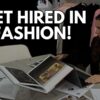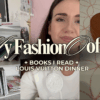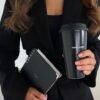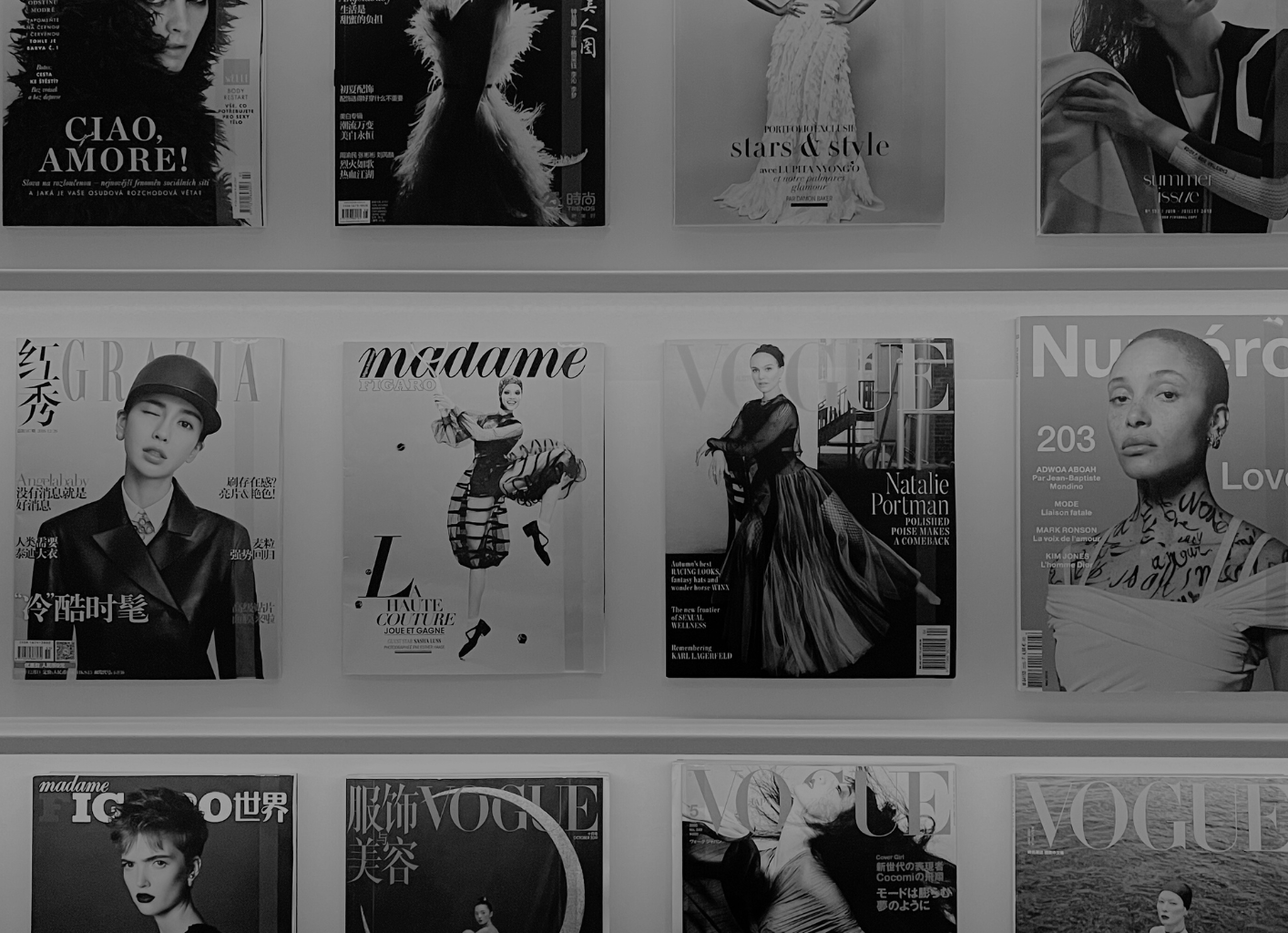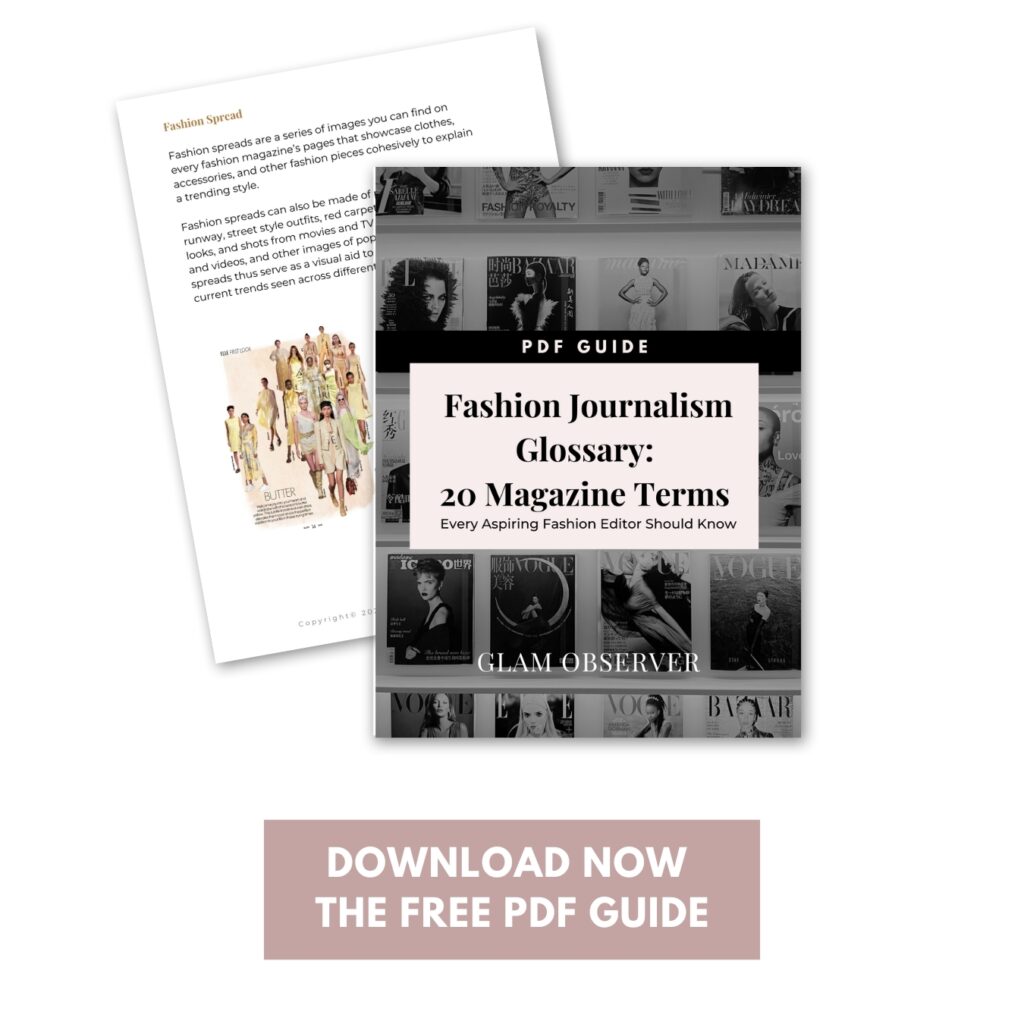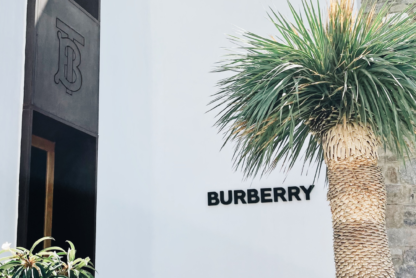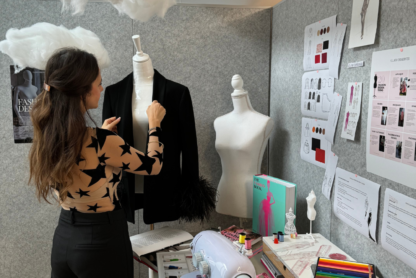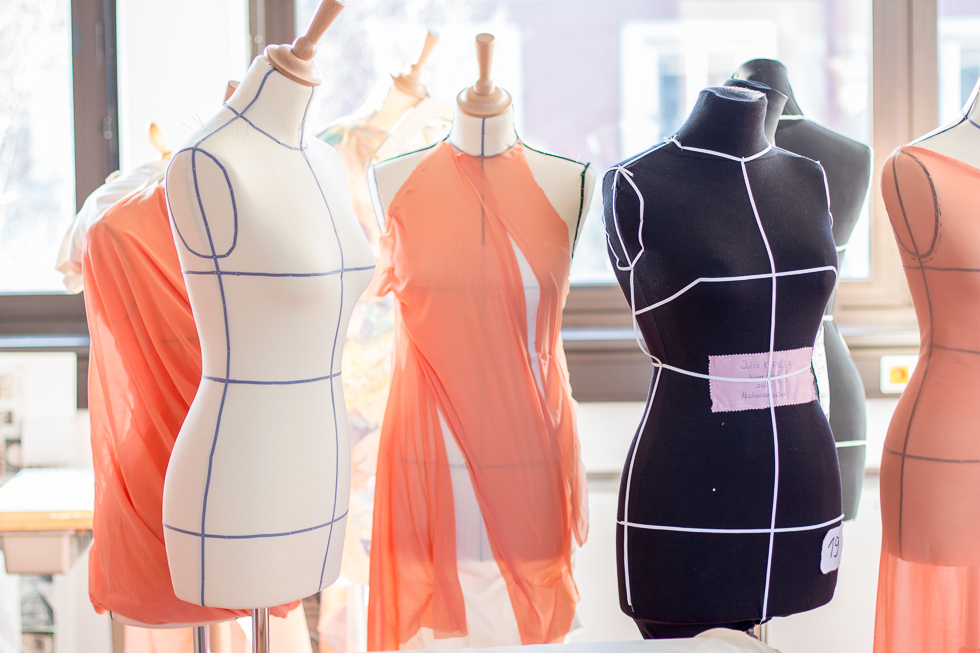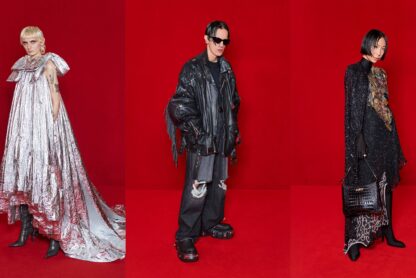If you aspire to work in a fashion magazine, it’s essential to know the common terms used in fashion journalism and behind-the-scenes of the magazines.
Maybe you are an aspiring fashion editor or writer in need of understanding the key fashion magazine and journalism concepts that will be useful in your career.
Or you are preparing for a job interview at a fashion publication or you plan to send your pitch to the editor and you want to ensure you use the correct industry terms.
In any case, the more vocabulary you know – the better it will be for your career in fashion and to enhance your industry knowledge.
In this article, we compiled 20 fashion magazine terms you need to know.
Do you prefer downloading the PDF version so you can have it with you and consult it whenever you need to?
Fashion Journalism Glossary: 20 Magazine Terms You Need To Know
Inverted pyramid
The inverted pyramid is a term used in journalism to describe how information should be arranged in the article. In the inverted pyramid, the most crucial information goes at the top. Then, followed by other important information in the middle, and concluding with additional, the least essential info at the end.
Lead Time
The lead time refers to the time that goes from when the article is written to when it gets published.
Considering the lead time is important. It allows fashion writers to be organized and plan their articles in advance. So, when they get published, the topic is still relevant and is not old news. So fashion writers have to consider the lead time when pitching their ideas to magazines.
The lead time can vary depending on whether they are released every month like Vogue, or weekly like Elle. But usually, every publication prepares their issues a couple of months in advance. Their lead time usually goes from 6 weeks to 3 months. If you work in-house or want to contribute to a specific issue, this means you have more time to plan and write your articles.
On the other hand, digital magazines and fashion websites have a shorter lead time. It can last 1 hour, 1 day, or 1 week as they tend to post every single day. This means that if you are an in-house writer, your boss may ask you to write an article that will go live an hour later.
Magazine’s tone
Every publication has a particular tone aka voice and language. It’s the way a magazine speaks to the audience and the overall mood it creates.
For example, the tone of Vogue is considered sophisticated as the magazine employs a formal and refined vocabulary. For example: “26 dresses stamped with the Vogue-editor seal of approval”.
Whilst Cosmopolitan is known for having a friendly voice and can use more informal language and abbreviations like “Girl, you need these shoes ASAP.
Knowing the magazine’s tone is essential for freelance fashion writers to adapt their articles to the tone of the publication.
Desk Side
In fashion, a desk side refers to a meeting between a fashion journalist/editor and a PR representative of a brand or a fashion designer to discuss about the brand or a specific collection.
Desk sides provide the opportunity to build stronger connections between brands and fashion editors. The main intention is to get their products featured in the magazine.
Story angle
The story angle is the point of view/perspective a fashion journalist chooses to write the article.
The story angle is what makes one article different from another when covering a topic.
For example, there are many ways to write about sustainability in the fashion industry. One article can speak about the challenges the industry faces in general. On the other hand, another piece can cover the specific issues encountered in the brands’ supply chain.
Pitch
A pitch is a brief message sent by a writer to the magazine. Here, the writer explains their article idea and convinces the editor to publish it. A pitch is meant to give the editors a preview of the overall content of your work. It help them determine whether it’s suitable for their publication.
A good pitch should explain in no longer than 500 words. It includes who you are, the main idea of your article, in what it is unique, (compared to other pieces published on a similar topic) your portfolio, and contact information.
Run Through
The run-through is a meeting during which fashion editors show to the editor-in-chief the looks they want to use in the editorials.

Once they decide on a story, fashion directors, editors, and stylists pull (digital) boards of all the looks they are planning to use for that fashion story that will end up in the pages of the magazine. They then show these boards with the looks to the editor-in-chief and the creative director. They share their idea for the story.
Next, editors and their assistants call in all the clothes a few days before the shoot. Here, they can put together the looks on the racks and see if everything is cohesive and still makes sense in real life.
When the clothes arrive, the magazine team can go with the run-through. For example at Vogue, they roll the racks into Anna Wintour’s office and analyze them together to decide which looks they are actually going to use for the editorials.
Standfirst
A standfirst is a short piece of text in an article below the headline (aka the title) that gives the most important facts and ideas that are contained in the article.
For example, WWD published this news:
Headline/Title: Ferragamo Sales Decline in First Quarter
Standfirst: Weak performance in China and wholesale caused numbers to dip, but new CEO Marco Gobbetti said he’s confident in the brand’s new “evergreen” product strategy.
Strapline
A strapline is a brief slogan or tagline used to refer to the tone or focus of a publication. For example for Vogue, the strapline could be “The Fashion Bible”.
Magazine Cupboard
Remember when Andy from The Devil Wears Prada decided to change her looks and Nigel showed her where The Runway keeps all the clothes, bags, and shoes? She was in a “cupboard”, in other words, a closet that every fashion magazine has.
The magazine’s cupboard is where you can find all the clothes, accessories, and beauty products received by the PR teams, which they borrow from brands for editorial photoshoots and fashion spreads.

Editorial Calendar
An editorial calendar provides the schedule of a magazine’s overall content strategy. Usually built quarterly or yearly, the editorial calendar gives a big picture of the publication’s main themes and topics.
An editorial calendar usually includes the following information:
- The main theme of the issue. For example, The Beauty issue, Prom issue, The big fall shopping issue, etc.
- The deadlines for advertisers to submit their ads and contributing writers to send their pitches.
- The date of the issue’s release in print and/or online
An editorial calendar is not to be confused with a content calendar. There are some differences between them.
Content calendar
A content calendar is a comprehensive planning tool used by fashion magazines to plan and schedule content across different platforms. It helps streamline the creative process of editors, writers, assistants, and social media managers to keep everyone organized.
Compared to the editorial calendar, a content calendar is more of a short-term roadmap allowing one to plan and schedule content daily, weekly, and monthly. It usually includes:
- The titles of the articles and posts planned for the day, week, or month
- The people responsible for the content
- The distribution platforms (print issue, website, social media platforms, etc.)
Media kit
A magazine’s media kit is a document that a magazine sends to advertisers and advertising agencies with the necessary information to purchase an ad space inside the publication. The goal of the media kit is to convince advertisers that this particular magazine is the ideal place to promote a brand’s products.
A media kit is also useful for freelance fashion writers who want to contribute to the magazine. Knowing which topics are covered in the magazine and the deadlines to submit pieces can help writers plan their work accordingly.
The media kit includes the following information:
- The concept of the magazine and its readership
- The editorial calendar
- Rates according to the size of the ads
- Materials, format, and procedure for submitting the ad request
- The deadline for reserving an ad
Masthead
The masthead is a page in a magazine or newspaper that includes a list of people who contributed to the issue. In the fashion magazine, a masthead includes the names of the editors, the marketing team, the digital department, contributing writers, and other professionals working at the magazine.
Fashion Spread
The fashion spreads are a series of images you can find on every fashion magazine’s pages that showcase clothes, accessories, and other fashion pieces cohesively to explain a trending style.
Fashion spreads can also be made of pictures from the runway, street style outfits, red carpet looks, celebrity looks, and shots from movies and TV shows, music tours and videos, and other images of pop culture. Also, the fashion spreads thus serve as a visual aid to understand the current trends seen across different platforms.
Lookbook
A lookbook is a catalog of images that shows the collection of a specific season: Spring/ Summer, Fall/Winter, Pre-Fall, or Resort.
It can be a catalog that shows the looks presented during a fashion show with a description and style codes. The lookbook can be divided into categories (ready-to-wear, accessories, etc.)
Not all the lookbooks are made with photos from the runway, though. Many brands use photos realized ad hoc for the lookbook, shot in a professional studio with a stylist, models, and a photographer.
Brands create physical and digital versions of their lookbook that they send/show to:
- Press and editors to show the new collection and get a feature.
- Fashion editors when they want to see the collection and request some products or looks they want to use in editorial shootings.
- Stylists when they have to dress up some celebrities or people for events.
- The lookbook can also be found in showrooms where buyers place their orders.
Byline
A byline gives the name of an article’s author – the editor or writer who wrote the piece. For example, articles we write on the Glam Observer blog often have the byline “by Giada Graziano”.
Press release
A press release is a document that fashion brands or magazines produce to be distributed to share news. It’s used to announce a fashion show, the appointment of a new designer, or a new headquarters. It can also include the opening of a new store, the closure of a magazine, the launch of a new product or collection, a sustainable initiative, etc.
It’s mainly used by brands to send it to press contacts (editors of magazines, blogs, influencers…). These people can then spread the news by writing articles and posting the news on social media.
A fashion press release is produced by fashion PRs. They work at a brand or by a PR agency if that brand works with an agency.
The press release usually fits into one page. It includes the logo of the company on top, the date, and the news. If news shall be shared immediately, there is a note that says “For Immediate Release”. At the bottom of the press release, one can find the contacts of the press team to reach out for questions or more information.
Embargo
An embargo in journalism means that a source asks a magazine or newspaper to delay the publishing of the news received.
An embargo is usually used in the press release. When a press release is under embargo, it means that the magazine’s writers and editors are given early access to the information, but they are not allowed to publish it immediately.
For example in fashion, a brand, say Chanel issues a press release about the upcoming product launch to Women’s Wear Daily. The brand can request to not announce this news immediately but at a later date.
Boilerplate
A boilerplate is a brief paragraph that you can find at the end of a press release that contains a short description of the company. Think of it as the “About” section of the brand.
By taking the time to learn and understand these essential terms, you’ve taken a significant step toward achieving your goals in the fashion industry. Remember, the journey to becoming a successful fashion editor or journalist is a continuous process of learning and growth. Keep exploring, stay curious, and never stop honing your craft. The fashion industry is constantly evolving, and your passion and dedication will set you apart.
Curious to learn more fashion terms?
Download here our free PDF guide “30 fashion industry terms every fashion professional needs to know”.
Want to become a fashion editor or writer?
I invite you to enroll in my online course The Fashion Writer Accelerator and explore more career resources on this website.
Follow me on Instagram for more updates.
